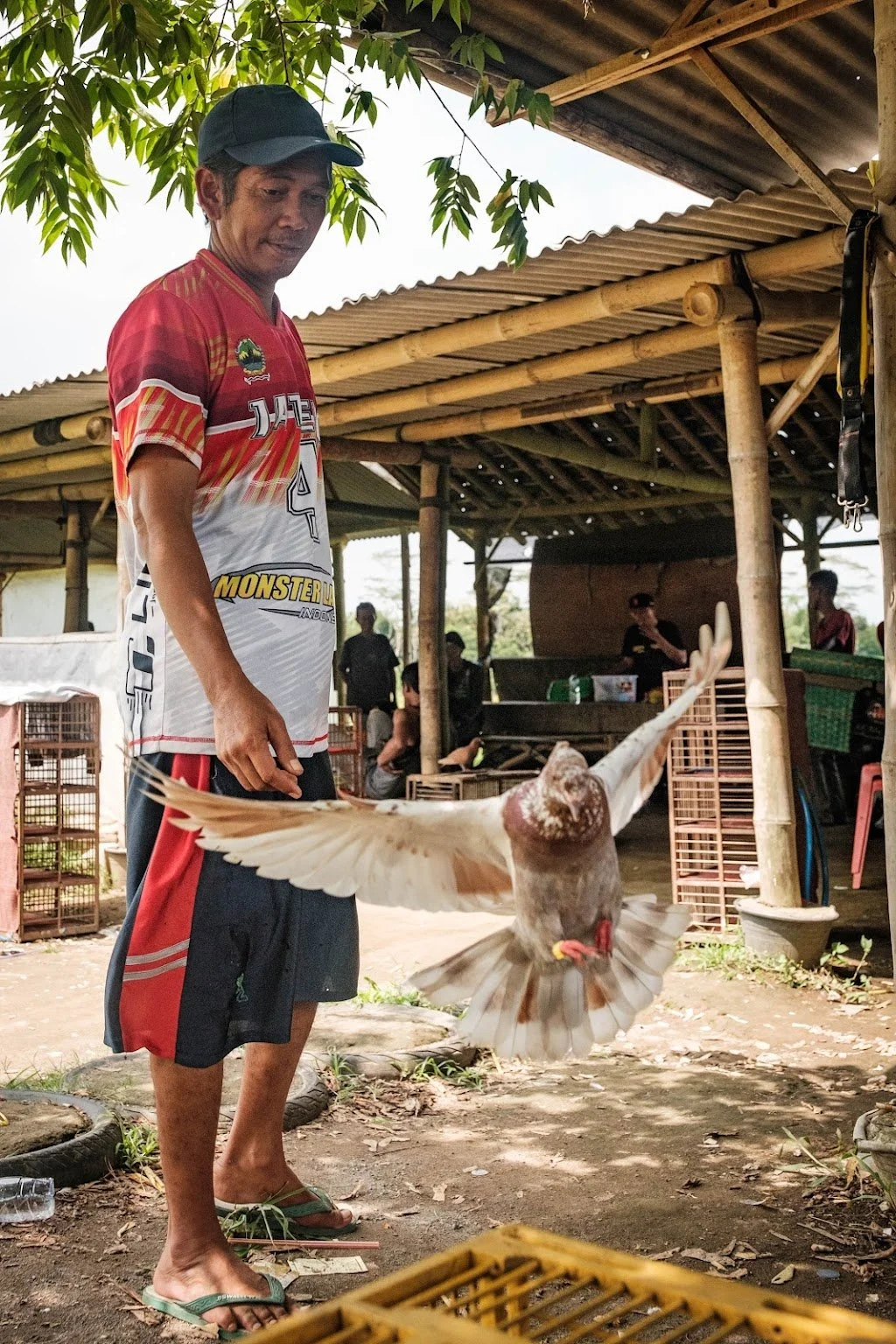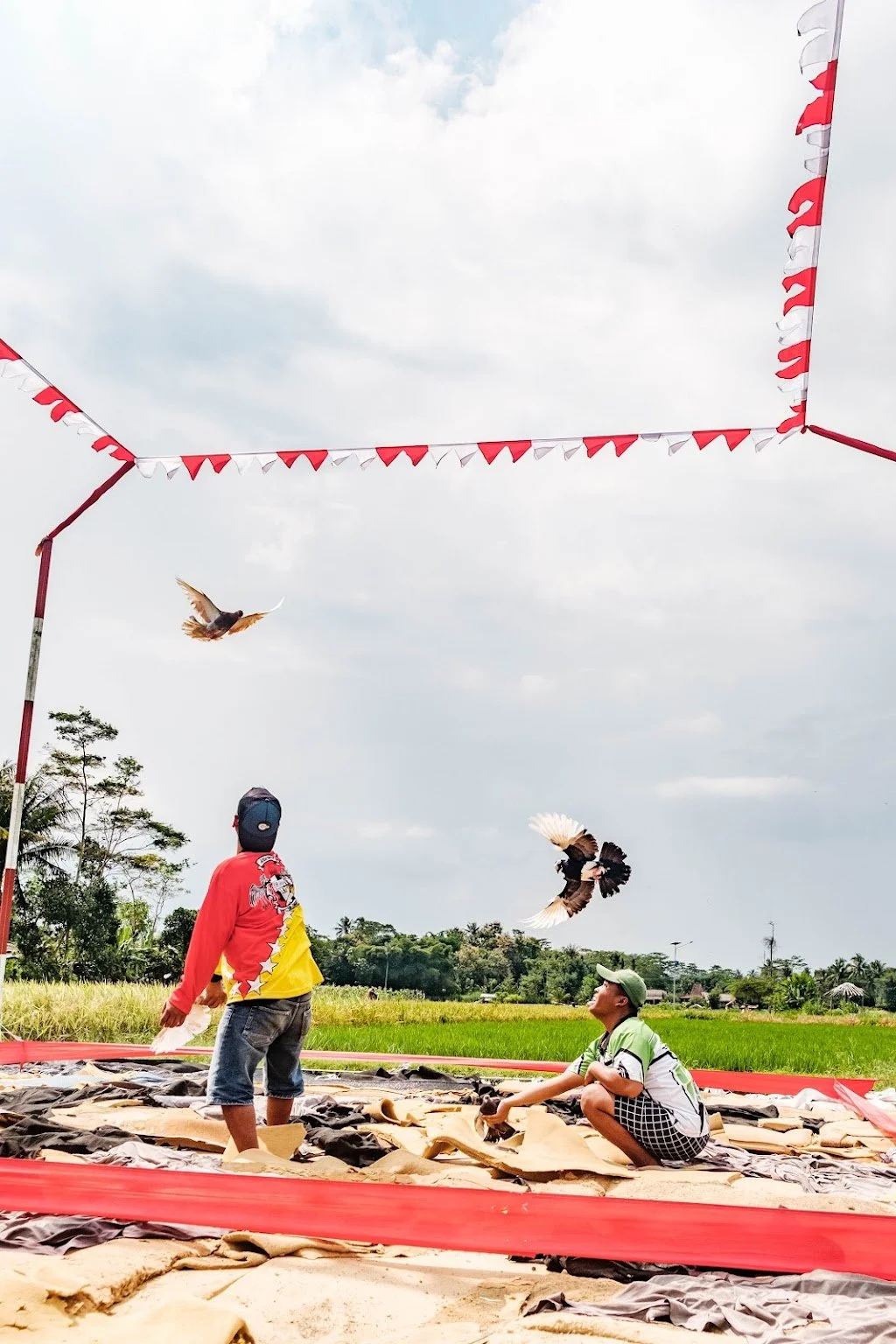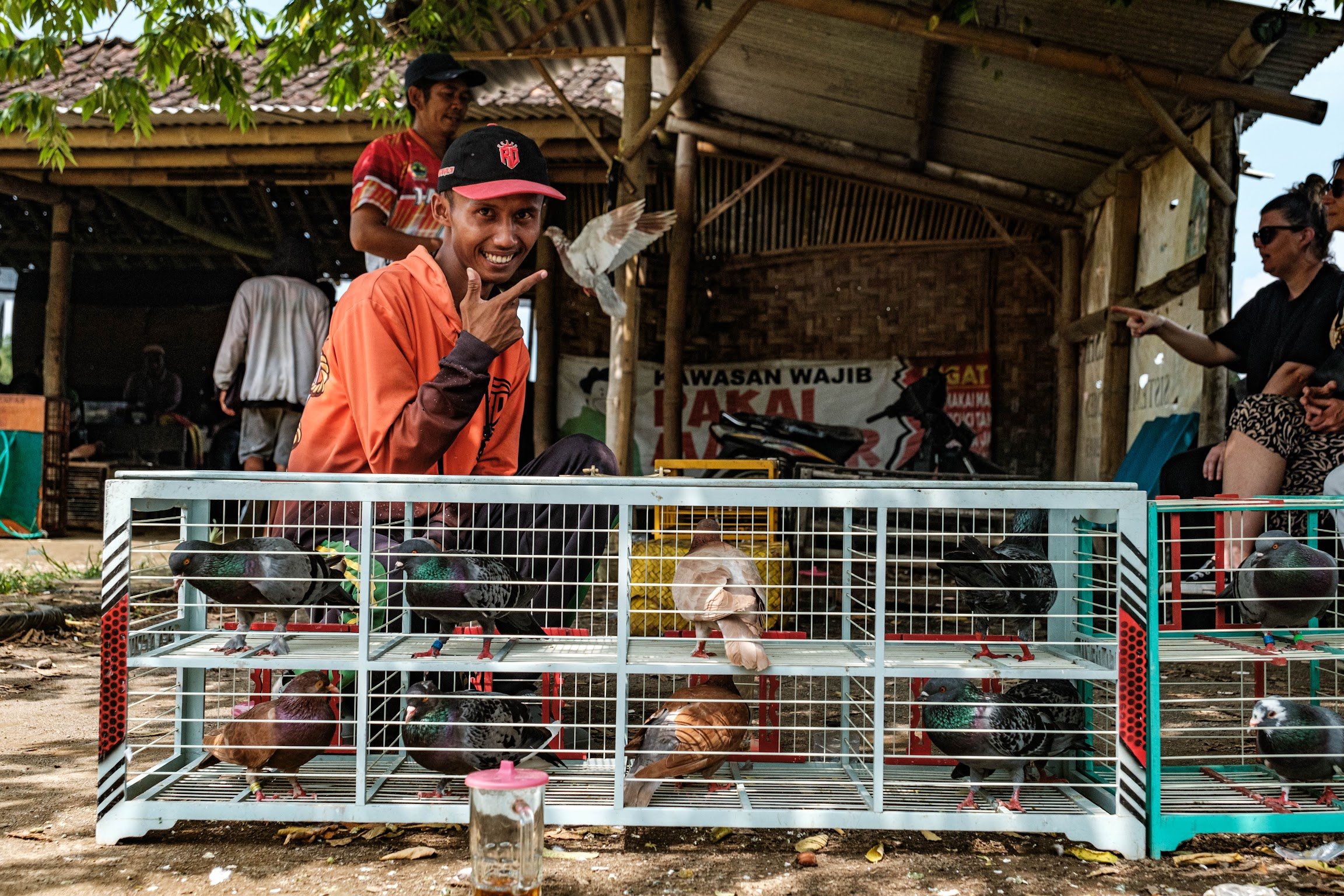
Java - Rice Terraces & Tradition
Green jungle and agitated pigeons in the shadow of Borobudur.
Scroll ↓
Squinting, I apy tiny specks of grey hurtling towards us over rain-soaked rice terraces. A few feet to our front is the local Kolong, a pen of four, candy-cane striped bamboo poles linked by a band of red flags. Two men casually stand in the middle holding birds behind their backs like crossed fingers. As the specks approach, the men drop the casual act and spring into action — waving frantically with one hand and calling out as they hold their birds aloft in the other. The specks are male pigeons rushing to their bonded mates from a release spot 2.5 kilometers away. The birds plunge to land beside their “wives” in a blur of feathers. To avoid disqualification on their flight, the male birds must fly through the flagged opening of the Kolong and land on its elevated floor, which is lined with sandbags to cushion the intensity of their lust-filled arrival. You see, during pigeon-racing season, the birds are not permitted to mate. The aggravation is obvious. Pecking at the females’ cages, and even on their heads if they are allowed to come close, the male birds are kept in a constant state of agitation. The Javanese theorize that a frustrated bird is a fast one. These men (and they are all men!) obsess over pigeon racing, spending countless time and money at their neighborhood Kolong. Rumor has it that the pasttime is wholly responsible for more than one Central Java divorce.
The Alexander Nevsky Cathedral commands a full city block, its gold domes reaching toward the heavens. The largest cathedral in the Balkans symbolizes Sofia itself and serves as the prevailing image of the capital city. Constructed between 1882 and 1912 it commemorates liberation from the Ottoman Empire. In the basement, Byzantine art hangs under low ceilings between narrow stone arches. A few paintings border on comic-book style. One makes my friend Marianne chuckle. The Christ child reminds her of the famous UK child-show puppet, Pob.
Public sculpture abounds in Sofia — in fountains, on buildings, and rooted to the earth. The most famous is the 26-foot tall Sveta Sofia (Saint Sofia), which replaced a Lenin statue in a prominent central square after the fall of communism. Sculpted by Georgi Tchapkanov, she caused a stir and remains controversial today due to her cleavage and erect nipples. During our spring 2023 visit, the Bulgarian National Museum of Art exhibited a selection of Tchapkanov’s work to celebrate his 80th birthday. Depicting elongated and dislocated human and animal bodies, I found each piece subversive and fascinating.
Moody, misty, morning light in Veliko Tarnovo enhances the almost mythical vibe of this medieval Bulgarian town. High up on the hilltop, a fortress dominates the view. At its peak sits a deconsecrated cathedral. Once sacred during the Byzantine Era, it crumbled and communists rebuilt it into a tower of good and evil. From fallen angels to liars and cheats, it showcases darkly allluring murals of human foibles and frailty.












